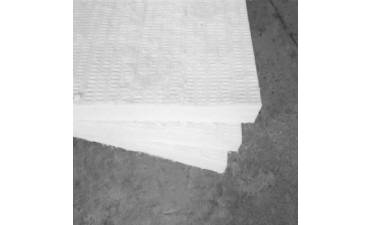Ceramic fiber insulation is a fibrous, lightweight refractory material. The main chemical composition is aluminum silicate. According to its mineral composition, it can be divided into two categories: glass fiber and polycrystalline fiber. Glassy fiber is an amorphous solid fiber formed by cooling a substance from a molten liquid state. Polycrystalline fibers are mostly formed by colloidal blowing (or spinning), and are calcined at high temperature.
Ceramic fiber is widely used in various heat-resistant and heat-resistant materials of thermal kiln. Because its volume is much lower than other refractory materials, the heat storage is small and the thermal insulation effect is obvious. As a lining material, it can greatly reduce the thermal kiln's Energy loss has brought about a revolution in thermal furnaces in terms of energy saving. On the other hand, its application technology and method also brought a revolution to the construction of thermal furnaces.
Status of use:
Ceramic fiber first appeared in 1941, the United States Babu Wilcox company used natural kaolin, melted and blown into fibers by electric arc furnace. In the late 1940s, two companies in the United States produced aluminum silicate fibers and were first used in the aviation industry; in the 1960s, the United States developed a variety of ceramic fiber products and used them in industrial kiln wall linings. In the 1970s, ceramic fibers began to be produced and used in China, and its application technology was rapidly promoted in the 1980s, but the main use temperature range was below 1000 ° C, and the application technology was relatively simple and backward. Since the 1990s, with the promotion and application of zirconium-containing fibers and polycrystalline alumina fibers, the use temperature has increased to 1000 ° C to 1400 ° C. However, due to product quality defects and backward technology, application fields and application methods have been affected. Limitations. For example, polycrystalline alumina fibers cannot be made into fiber blankets. The product specifications are mainly loose cotton and fiber blocks. Although the insulation temperature of household appliances has been increased, the strength is very poor, which limits the scope of use and shortens the service life .
Zirconium-containing fiber is a widely used and low cost aluminum silicate fiber produced by the melting method. It can be used in large quantities as a hot surface full fiber lining for building various thermal kiln. And the application development is still relatively backward, now there are chromium-containing fibers in foreign countries, the use temperature is higher than the zirconium-containing fibers, no domestic reports in this regard.

Ceramic Fiber Board
Type and use:
The main types of ceramic fibers are: ordinary aluminum silicate fibers, high alumina aluminum silicate fibers, aluminum silicate fibers (including Cr2O3, ZrO2 or B2O3), polycrystalline alumina fibers, and polycrystalline mullite fibers. In recent years, foreign countries have successfully developed (or are developing) some new ceramic fiber varieties, such as: forsterite fibers, ceramic fibers (SiO2-CaO-MgO series and Al2O3-CaO series), and so on. The main forms of ceramic fiber products are: ceramic fiber cotton, felt, blanket, module, paper, cloth, belt, rope, etc.
Ceramic fiber blanket: most of the self-melting, continuous melting and continuous spinning production processes are used to make long filaments. The fibers are interwoven by double-sided needle punching, which can be directly used as the hot surface of the flame. Insulation and heat preservation are integrated into one, and it can maintain good strength and toughness after long-term use in neutral, oxidizing and partial reducing atmosphere. The fiber module made of this fiber blanket does not contain a binding agent and has good thermal stability. It is widely used in the fields of heat preservation and heat resistance such as petrochemical, metallurgy, and power.
Ceramic fiber board: It is made from ceramic fibers, binders, and additives through pulping, molding, curing, and drying. Ceramic fiber board has good flexibility, easy cutting and high strength. It is a new type of energy-saving and environmentally friendly product with low thermal conductivity and low heat storage. It is widely used in the backing of walls and ceilings of various heating equipment.
Ceramic fiber cloth, belt: Mainly used in fire door, industrial furnace insulation, high temperature pipeline and container insulation.
Ceramic fiber rope: It is mainly used in expansion joints of various industrial furnaces, winding insulation of high temperature pipelines, and heat insulation of steel structure joints.
Copyright © Tianjin Haimen Building Materials Co., Ltd. All Rights Reserved
Sitemap
